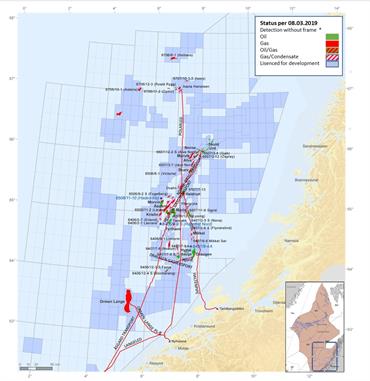Abrasion is caused by towed bottom-contacting gear and offshore oil and gas operations; it affects benthic organisms and habitats. The physical disturbance of benthic habitats by bottom trawl fishing gear is described using vessel monitoring system (VMS) and logbook data. The extent, magnitude, and effects of mobile bottom-contacting fishing gear on the seabed and benthic habitats varies spatially across the Norwegian Sea, according to the large seabed mapping project MAREANO. Such fishing gear is seldomly used in the Norwegian Sea, and is limited to the shelf in the southern part of the ecoregion (Figure 5). Coral reef areas are protected from bottom fishing.
Using VMS and logbook data, ICES estimates that mobile bottom trawls used by commercial fisheries in the >12 m vessel category have been deployed over approximately 26 075 km2 of the ecoregion in 2018, corresponding to about 2.2% of the ecoregion's spatial extent (Figure 5).
Offshore oil and gas operations are presently limited to the south-eastern part of the ecoregion (Figure 6).

Figure 6 (click to enlarge): Active oil and gas activities in the Norwegian Sea, March 2019. Red lines are gas pipelines. Areas that are not marked as licensed for development (pale blue), are currently closed (Source: Norwegian Petroleum Directorate, http://www.npd.no/en/).

